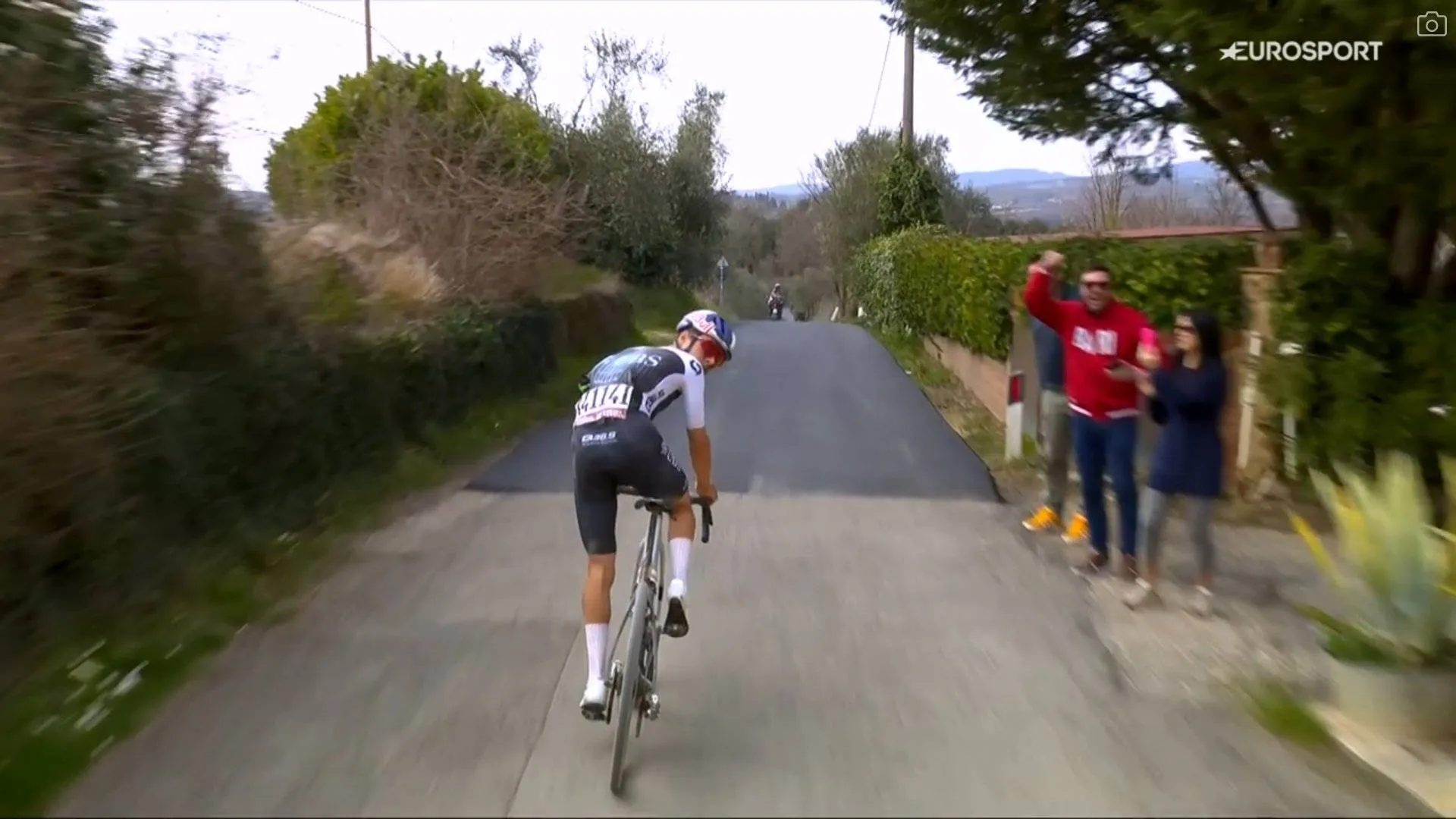Why Pogacar’s Strade Bianche crash and Pidcock-chase still feels like a miracle in Tuscany
CyclingThursday, 27 November 2025 at 12:30
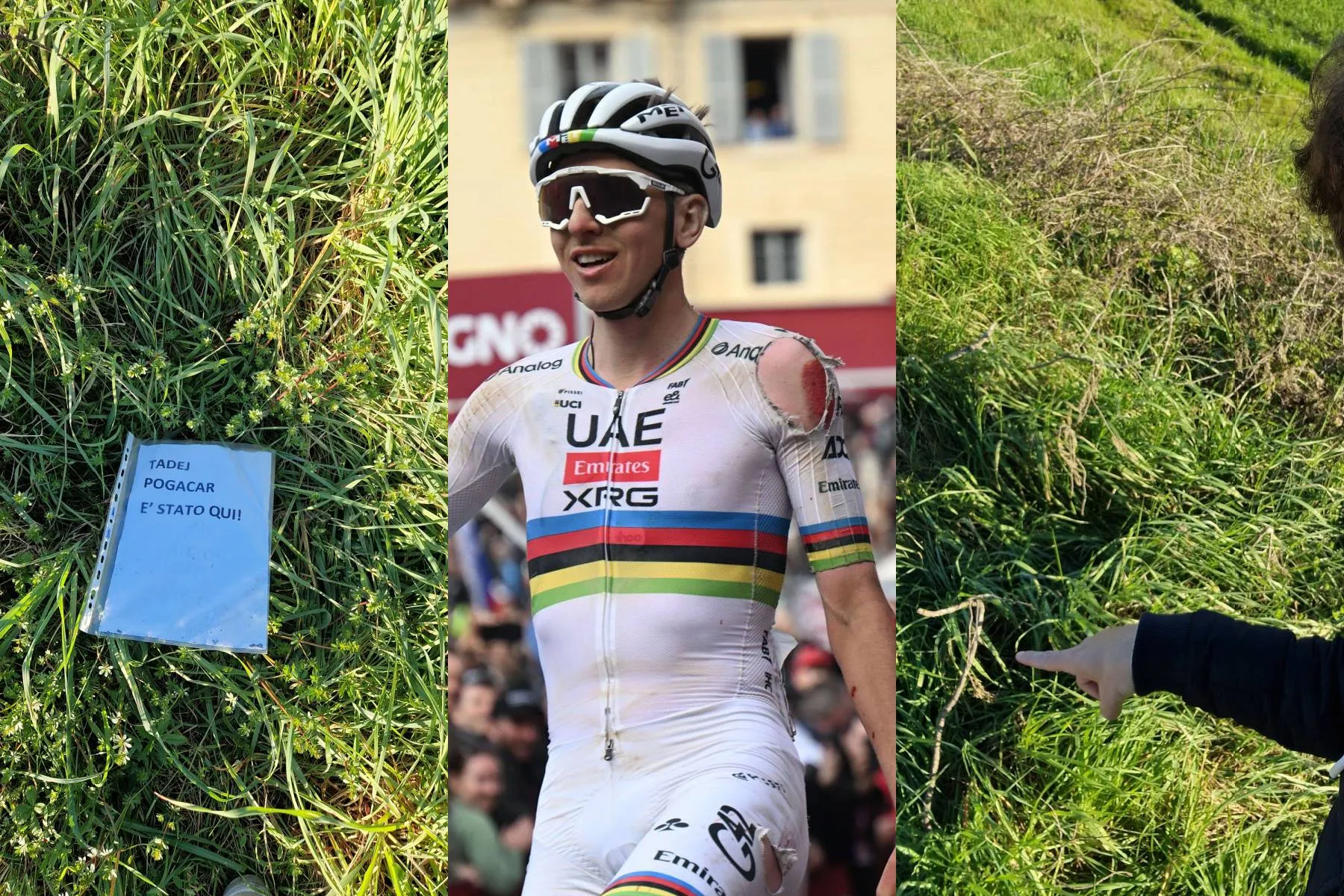
When the dust settled on the morning of 9 March and calm returned to Tuscany, there was one Italian who decided to act. He opened Word, printed an Italian text, slipped it into a protective plastic sleeve — then drove to the site of misfortune. The place where Tadej Pogacar had fallen a day earlier in Strade Bianche — but also the place where the world champion, against all odds, got back up and kept going.
The corner sits immediately after a fast descent. Take a right at Monteaperti, climb a steep gravel embankment, claw your way up an extremely steep asphalt road and the route will naturally lead you there... You start with a view over Siena, before arriving at a corner after a sequence of three sharp turns (left-right-left) — a bend you simply cannot see through. Pogacar had taken it dozens of times before, but this time he approached it too fast.
Because Tom Pidcock — riding for Q36.5 — managed to stay on Pogacar’s wheel after the usually decisive Monte Sante Marie gravel sector, the rainbow jersey of UAE Team Emirates-XRG was suddenly under real pressure. And with early breakaway companion and fellow Brit Connor Swift (INEOS) joining Pidcock, Pogacar apparently felt the need to push the pace.
Continue reading below the photo
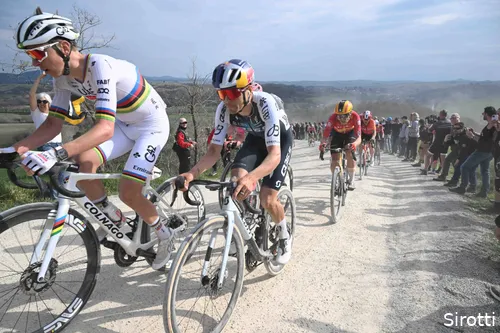
Pogacar didn't get Pidcock off, the reason for a fall in the final
Crash of Pogacar was much more violent than many thought
The left-hand corner, past a Tuscan field and leading to a stretch of flat road toward Colle Pinzuto, was where Pogacar tried to surge to the front in the penultimate local lap. Why choose that spot — of all places — when Pidcock was in his downhill element? As the Brit shook his head taking the inside line, Pogacar slid out just in front of him.
What followed seemed like a soft fall on TV: Pogacar picked himself up, asked for his bike, straightened his glasses — and continued. But those who visited the spot in the days after knew immediately the crash had been far more serious than it looked. Behind the soft grass on the embankment lay a thorny briar bush — and Pogacar had landed right in the middle of it.
The deep cuts on his body didn’t come from sliding across asphalt, but from the prickly vegetation. An Italian left a sign at the spot that read: “Tadej Pogacar, e’stato qui” ("Tadej Pogacar was here"). That sign remained there weeks after the crash, embedded in Pogacar’s body imprint among the bushes.
Despite the severity of the crash, Pogacar didn’t just continue — he came back. He even changed bikes, reconnected with the chasing Pidcock, and on the final ascent of Colle Pinzuto — after a strong descent — Pogacar soloed to victory in Siena. A torn shoulder, a stained kit and undoubtedly a battered body under the pristine white jersey were grim reminders of just how much luck he had.
Continue reading below the video
Pidcock remontada by Pogacar all the more crisp in Strade Bianche
After the race, Pogacar admitted he was angry with himself for the crash. Because although he had won Strade Bianche, the world champion surely realized in that moment his spring campaign could have ended right there. Too much risk at the wrong moment — especially against a Pidcock who descends like he’s blindfolded. The Brit went on alone, but would not win the gravel classic.
That patch of road outside Siena—reached via gravel climbs and narrow Tuscan tracks — has become almost sacred. Fans still visit, some leaving flowers or messages. The plaque bearing “Tadej Pogacar was here” has become a humble memorial — a quiet tribute to the rider who fell, rose, and against all odds, claimed victory. In Tuscany, it’s still spoken of as nothing less than a miracle.
And otherwise that sign in the bushes did the trick. "Tadej Pogacar was here".
Read also
IDL-productions
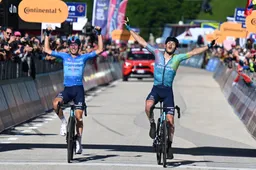
Thanks to a tactical master plan and near-perfect execution, Astana all of a sudden came close to the very best teams
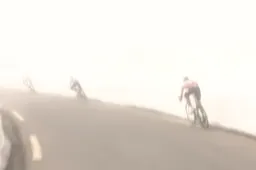
The incredible climbing star who could follow Nibali after Kruijswijk’s crash—but later hit his own limits
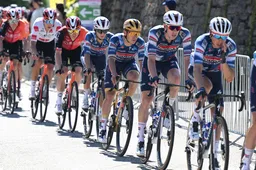
Soudal Quick-Step sees Evenepoel leave to Red Bull, so how sure is a successful 2026 for the team?
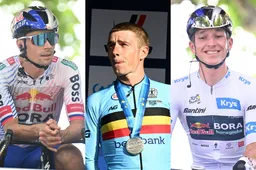
The debate about Red Bull-BORA-hansgrohe’s current leaders and Evenepoel is almost laughable after 2025
Latest Cycling News

Cycling news at your fingertips: Follow IDL Procycling everywhere!

INEOS Grenadiers has big task in board immediately for Geraint Thomas in brand new role
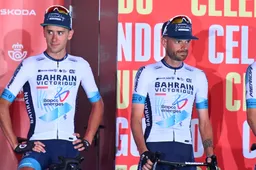
Tiberi’s last chance? Caruso says Bahrain has done its part — now it’s on him
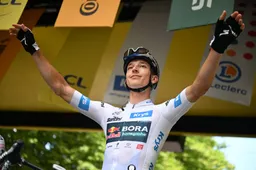
Lidl-Trek could shake up transfer market again — but this is why that probably won't happen
Popular Cycling News

🎥 Mathieu van der Poel stars once again in a new video — and above all: the 100,000 likes are in!

Why Attila Valter left Visma | Lease a Bike – and what Cian Uijtdebroeks found at Movistar

Not retiring yet? Chris Froome shares hopeful update after violent crash: "Every setback teaches you something"

Lidl-Trek could shake up transfer market again — but this is why that probably won't happen
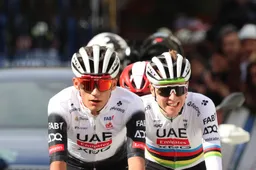
Better than Pogacar? UAE-talent praises Del Toro’s confidence: ‘Unlike any rider I’ve seen’
Latest Comments
- Pidcock could follow everyone but Pogi while finishing 3rd. No second place rider this season😃Veganpotter16-11-2025
- Now the Palestinian protestors can stop their whining. Trump came to the rescue. So they can now STFU and go back to waving the rainbow flags.raufus15-10-2025
- Cracked the code lol. If it was that easy to 'crack the code' jonny Vegas would be charging up the Kwaremont giving Pog a dose of his medicine. Evenepoel can't match pog on a climb and neither can mvdp. Anything with a half difficult climb and Pog smashes the field. Even on flat(ish)parcours like Roubaix it came down to a mistake and crash by pog to definitively crown mvdp. MSR is the only one that Pog probably won't win.kevpt10-10-2025
- We've seen this movie before. I think Pogacar is doping.DeadBlow10-10-2025
- 👍Bea08-10-2025
- 👌🏻Bea08-10-2025
- What the data doesn't show is how much of an effect drafting had for evenepoel. Pogacar went with del toro at 100km whilst Evenepoel was still in the bunch. Despite the bike changes he still had a lot of assistance getting back to the bunch. Pogacar then rode 60km solo whilst evenepoel rode with Healy/Skjelmose until going solo in thd last 10-15km. Thats ~20% less power / energy requirements for 45-50km. Apples and oranges...kevpt30-09-2025
- 👏👏Bea24-09-2025
- Agreed! As we all know now, Juan Ayuso will be on another team. But it was sweet to see him win the stages at La Vuelta. I do love the drama of cycling admittedly but its clear to see the talent of winners of stages in a Grand Tourryhw2814fq921-09-2025
- Pogacar has no competition he has won everything, I cant imagine even being him in that position!! Crazy. I am sure he has some back up plan for how he wants to spend his retirement years at age 30 onward. Does he like beer? Plenty of innovation in brewing. And you don't have to be super social. Chapeau/Cheers whatever you like Tadej you will do.ryhw2814fq921-09-2025
Loading

